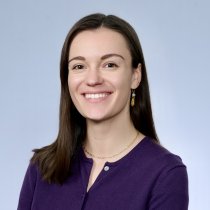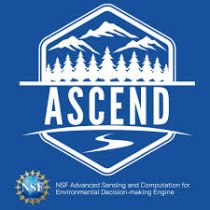An engineer and a scientist walks into a lab ...
April 17, 2013
By Janae Csavina
My job as the Quality Assurance/Quality Control Scientist in the Calibration, Validation and Audit Laboratory (CVAL) at the NEON project started in August 2012. I was straight out of grad school with my head still spinning from the three months of frenzied dissertation writing. I’d also just returned from living abroad in Australia for research. Settling into this position, I will admit, took some time. However, having worked as a scientist and engineer in both industry and academia, I realize my job in CVAL marries the experiences of both worlds.
In a past life, it seems, I worked in industry. I began my career as a chemical engineer consulting in water treatment. My experience in that job was a steep learning curve with a plateau for years on end. The lack of learning and challenge left me wanting. I’d previously experienced more rewarding work in an undergraduate research project utilizing algae for carbon sequestration. So I took the first available road back to academic research: graduate school. My master’s research picked up on my algae experience with a theme of generating biodiesel from algae. My PhD research was in a slightly less sexy science that involved chasing the world’s biggest air pollution offenders. My investigation of this man-made environmental problem included the full research process: coordinating field work, lab work, data analysis, and writing. The scientist in me quite enjoyed research. However, my engineering side felt neglected by the lack of hands-on problem solving.

The internal conflict between my scientist and engineer halves came up once again in my interview for the QA/QC position in CVAL. Someone asked me if I preferred researching science questions or making processes more efficient. Honestly, I wanted to say I enjoy both equally, but I opted to please the interviewer by answering the latter. Eight months into the job, I now realize how on-point that interview question was. Our mission in CVAL is to provide high-quality measurement capability for the NEON project. Calibration and validation techniques have been and will be developed for 44 different types of sensors used in the project. Some of these techniques have been adopted from NIST, NREL, and sensor vendors among others. In some cases, such as the outdoor blackbody, our techniques will be brand new to the field. Designing and building test/calibration equipment, developing and running experiments, and programming all things that have a cord attached are just some of our capabilities in CVAL. Not only are we developing these techniques, we are also preparing to calibrate or validate around 11,000 sensors, ~1,300 gas and water standards, and ~2,500 data acquisition systems in our facility each year.
Quality, traceability and accuracy are at the forefront of everything we do. Once NEON is at full capacity, CVAL will sound like a supermarket with all the barcode scanning that will take place (one of NEON’s controls for calibration, tracking, and operator error). As a chemical/environmental engineer who has dabbled in atmospheric science, CVAL is like a playground for me. My daily activities include running experiments, analyzing data sets, investigating methods for making procedures more efficient/accurate, and implementing protocols to control consistency in the lab. This position makes use of my chemistry, biological, mathematical, and environmental backgrounds. While I may occasionally envy the Field Ops staff who get to work outdoors, in CVAL, we get to have fun close to home with a state-of-the-art laboratory and outdoor calibration/validation facility. We have in-house capabilities to simulate the sun (for short-wave radiation sensor calibrations), mimic a blackbody (for long-wave radiation sensor calibrations), and create three phases of water simultaneously (for temperature probe calibrations).
As an engineer, I am happy with the continual problem solving and process improvements, and with having all the data necessary to make my heart content. As a scientist, my adjustment to the NEON project took a bit more time. I was accustomed to carrying out an entire research project myself, but at NEON, I am only a piece of the project. While my job maintaining sensor quality is very important, others at NEON will select these sensors, deploy them to the field, collect the data, and process the data for reporting. However, I feel fulfillment as a scientist when I focus on the amazing strides NEON will make in the world of climate and ecological change. It doesn’t hurt to be surrounded by an amazing group of people at NEON from whom continual learning will not be an issue. The scientist and engineer in me have both found a home here at NEON.

